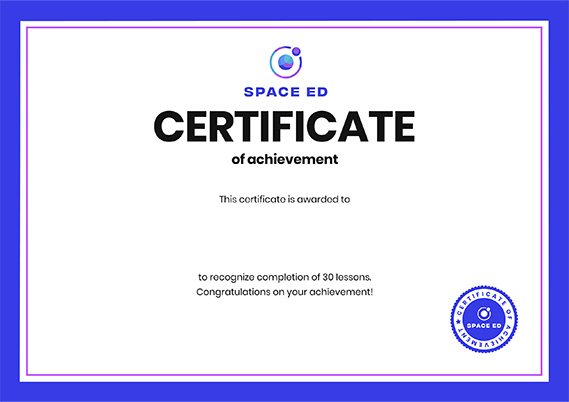Three ways the universe could end - Venus Keus
2,169,546 Views
5 Questions Answered
Let’s Begin…
We know about our universe’s past: the Big Bang theory predicts that all matter, time and space began about 14 billion years ago. And we know about the present: scientists’ observations of galaxies tell us that the universe is expanding at an accelerated rate. But what about the future? Do we know how our universe is going to end? Venus Keus explores cosmologists’ three possible scenarios.
Additional Resources for you to Explore
The Big Bang theory predicts that the present universe started from a teeny tiny speck containing all matter, time, and space around 14 billion years ago. That was all there was; this incredibly dense and hot state which suddenly went “bang” and exploded. It created space and time as it expanded rapidly.
Scientists have found that the evolution of the universe depends on three factors. The first one is the shape of the universe; it could be flat and closed (like a sphere) or open (like a saddle). The second factor is the amount of dark energy the universe contains. Dark energy is a mysterious component of the universe which acts against the pull of gravity. The third factor is how the dark energy responds to expansion; whether it gets diluted as the universe expands or its density stays constant.
A closed universe with lots of dark energy could expand forever. As the pull of gravity falls behind the expansion rate, the universe grows bigger and bigger. Not only galaxies but also the stars within galaxies move away from each other. As the lonely stars run out of fuel to burn bright, the universe gets colder and colder to a point it cannot sustain any life or motion. Scientists call this the Big Freeze scenario. For an open universe the situation is different. An open universe will expand even without any dark energy in it, leading to a Big Freeze. But if dark energy is present, then the expansion speeds up to a point where it could rip apart everything, even molecules, atoms, and sub-atomic particles. This is the situation scientists call the Big Rip scenario.
If a closed universe does not contain enough dark energy to overcome the pull of gravity, things could turn out differently. If gravity wins, it could bring the expansion to a halt and start pulling things together. Galaxies will start to clump which makes their gravitational pull even stronger. Stars within galaxies will accelerate towards each other and collide. As temperatures rise and space gets tighter, even atoms and subatomic particle will have to crunch together, leading to a very dense and hot state, very much like the state in beginning of the universe. Scientists call this the Big Crunch scenario. A universe that starts from a Big Bang and ends in a Big Crunch, could restart again with another “bang”. This is known as the Big Bounce theory and there is no way to tell how many bounces have happened or will happen in such a universe. All such information will be lost as the universe goes through the bounce.
So, which one of these universes do we live in? Well, this is an active subject of study in cosmology. Based on the observations, our universe looks very flat and is expanding with an accelerated rate. So, it seems we are going towards a Big Freeze scenario.
About Space Ed
Space Ed helps you untangle the mysteries of space with the universe’s best videos on everything from Einstein's theory of relativity to what it would take to live on Mars. Brush up on the science, philosophy and mystery of space, because the fabric of the universe is the same fabric that connects us all.
Meet The Creators
- Content Producer Gerta Xhelo
- Editorial Producer Alex Rosenthal
- Script Editor Eleanor Nelsen
- Narrator Susan Zimmerman
- Associate Editorial Producer Bethany Cutmore-Scott
- Art Director Joana Gonçalves
- Producer Eugenio Orsi
- Sound Designer André Aires
- Educator Venus Keus




